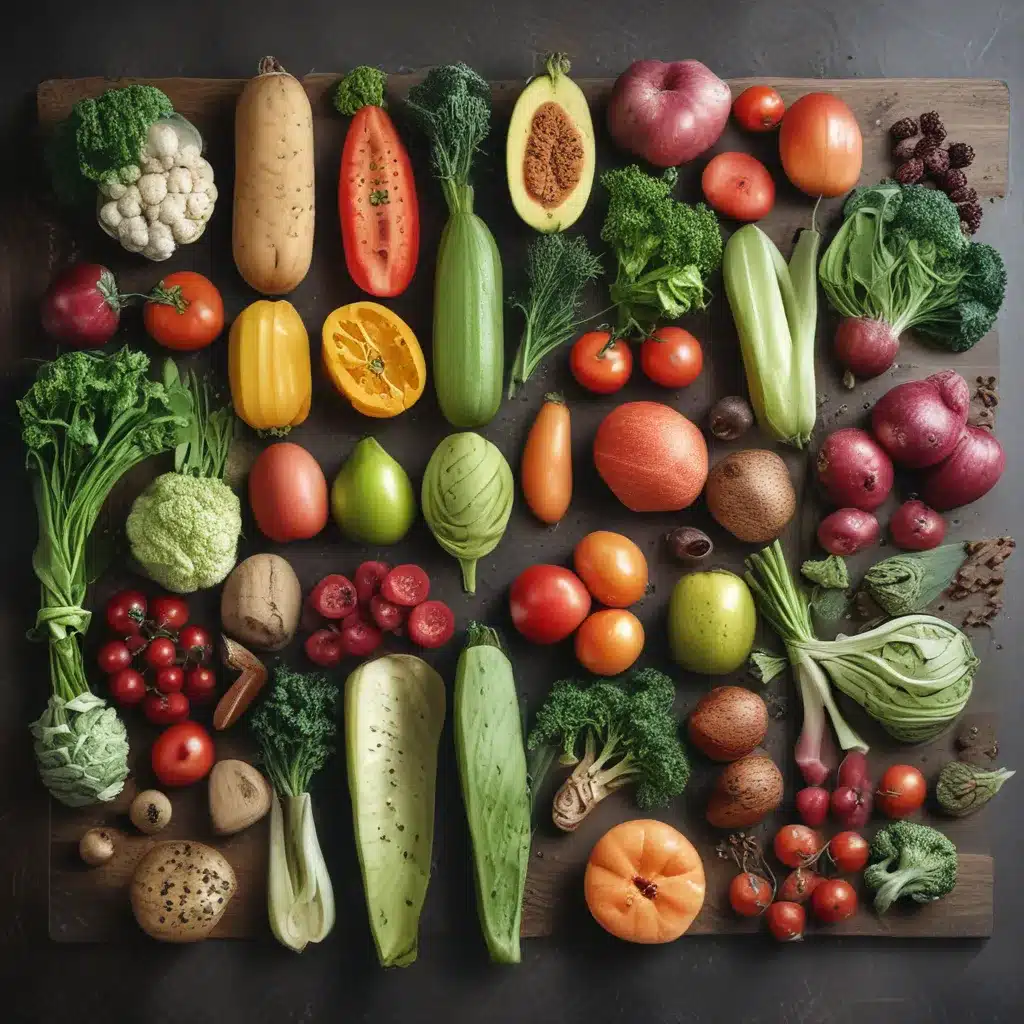
As a devoted member of our local community-supported agriculture (CSA) service, I’ve had the privilege of exploring a vibrant world of fresh, seasonal produce. From the crisp snap peas of spring to the hearty root vegetables of winter, each weekly box has been a delightful surprise, pushing me to expand my culinary horizons.
However, I’ll admit there have been times when I’ve found myself staring at a bountiful haul, wondering how on earth I was going to use it all before the next delivery arrived. That’s where the true magic of CSA living comes in – the opportunity to get creative and discover innovative ways to incorporate these unique ingredients into our everyday meals.
Conquering the Greens Galore
One of the most common challenges I’ve faced is the sheer volume of greens that arrive in those early-season boxes. Kale, spinach, chard – they seem to multiply faster than I can possibly consume them. But over the years, I’ve learned a few tricks to ensure these nutrient-dense powerhouses don’t go to waste.
As the farm crew at Food Farm CSA notes, “It can feel like a lot to keep up with too.” Their advice? Don’t be afraid to freeze those surplus greens. Simply blanch them, squeeze out the excess moisture, and pop them into freezer bags for later use. They work wonderfully in smoothies, soups, and even pasta dishes.
Another one of my go-to strategies is to get the family involved in finding new ways to enjoy these greens. My kids love when I blend them into sauces or puree them into dips – they’re always surprised by how much flavor they can pack. And speaking of flavor, don’t be afraid to get a little heavy-handed with the seasonings. As the folks at the European Environment Agency suggest, “a spritz of lemon juice on a bowl of fresh kale isn’t enjoyable for everyone – it’s OK in my book to load up on parmesan cheese and olive oil” to make those greens more palatable.
Conquering the Produce Variety
Another common challenge with CSA living? The sheer variety of produce that arrives each week. One week it might be beets and turnips, the next it’s zucchini and eggplant. While I love the opportunity to experiment, it can sometimes feel overwhelming to figure out how to use it all.
That’s where ingredient substitutions come in handy. As the Food Farm crew notes, green onions can often be used in place of regular onions in recipes. And if you’re swimming in zucchini, try swapping it in for eggplant or summer squash in your favorite ratatouille or moussaka.
I also find that roasting is an excellent method for highlighting the natural sweetness of many CSA veggies. Toss some beets, turnips, or even broccoli with a bit of oil, salt, and pepper, and you’ve got a delicious side dish that can be repurposed in all sorts of ways – from grain bowls to frittatas.
Embracing the Unexpected
Of course, one of the true joys of CSA living is the opportunity to discover new-to-you ingredients and get creative with how you use them. I’ll never forget the first time I received a bundle of garlic scapes in my box – I had no idea what to do with them! But after a quick online search, I learned that they make a fantastic pesto, adding a unique, garlicky punch to pasta, sandwiches, and more.
Similarly, I’ve found that unusual greens like pac choi and bok choy can be used interchangeably in stir-fries and sautés. And don’t be afraid to experiment with less common roots like turnips and radishes – they add wonderful texture and flavor to soups, salads, and even roasted veggie medleys.
The key, as the European Environment Agency points out, is to keep an open mind and embrace the opportunity to “co-produce and experiment with new ways of doing, thinking, and organizing” when it comes to your CSA bounty. After all, that’s half the fun of this journey!
Cultivating Connections
Of course, one of the most rewarding aspects of CSA living goes beyond the food itself. As I’ve discovered, these weekly deliveries have a way of fostering a deeper connection to our local food system and the community that sustains it.
The farm crew at Food Farm CSA puts it beautifully: “Sustainable food is part of food fairness just as climate justice is social justice and healthy choices for an individual add up to being healthy choices for a community.” By choosing to participate in a CSA, we’re not just nourishing our bodies – we’re also supporting local farmers, reducing our environmental impact, and strengthening the bonds within our community.
And when it comes to finding creative ways to use up all that produce, I’ve found that sharing and collaborating can be just as rewarding as cooking solo. Whether it’s swapping recipes with fellow CSA members, hosting a potluck feast, or simply gifting some of my surplus veggies to friends and neighbors, these acts of generosity and community-building have enriched my CSA experience in ways I never could have anticipated.
Finding Joy in the Journey
At the end of the day, the true magic of CSA living isn’t about perfecting the art of ingredient substitutions or mastering every culinary technique. It’s about embracing the journey, celebrating the bounty, and finding joy in the unexpected.
As the farm crew so eloquently states, “Thank you for being part of our farm and for participating in our work by gaining your daily sustenance from our food.” It’s a sentiment that resonates deeply with me, reminding me of the profound privilege and responsibility that comes with being a CSA member.
So the next time you find yourself staring at a box full of unfamiliar produce, don’t feel daunted – feel inspired. Dive in, get creative, and embrace the opportunity to nourish both your body and your community. After all, that’s what CSA living is all about.



